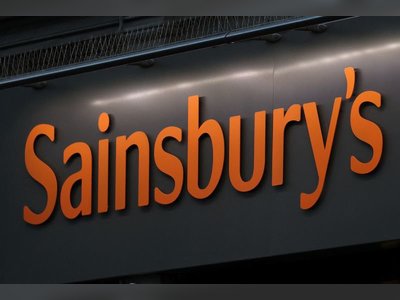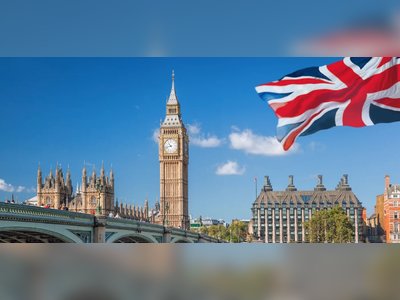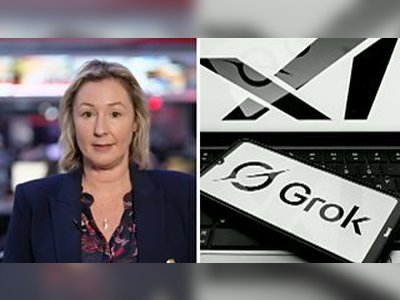
How to prevent Monet laundering
Britain’s art market is creative, edgy, world-leading - and, it is feared, a magnet for money launderers.
The next time connoisseurs are gripped by a record-breaking sale by a young Brit sensation or an old master, lawyers warn that they should pause to consider this startling statistic: according to the United Nations Office on Drugs and Crime, every year £2.3 billion of the global art market could be linked to money laundering or other financial crime.
In total, the global art market is thought to be worth more than £50 billion, and the UK has about a 20 per cent slice of that pie as of 2019. It is not difficult to understand why implementation of the European Union’s fifth anti-money laundering directive, which despite Brexit came into force in the UK last January, is seen as a crucial tool to crack down on abuse in the market.
“The decision to regulate the businesses in this sector is not surprising given the extent to which criminals see trading in works of art as an ideal opportunity to launder the proceeds of their crimes,” says Nicola Finnerty, a partner at Kingsley Napley.
Her London law firm is playing a pivotal role in the launch last week of a training and awareness programme for dealers and buyers that is supported by the three arts councils across the UK.
The updated directive extends anti-money laundering law to cover art market deals and requires galleries, auction houses, dealers and individual artists — all those involved in selling work valued at more than £8,500 directly to clients — to conduct due diligence, monitoring, and enhanced record-keeping.
Lawyers involved with the awareness campaign point to the government’s latest national risk assessment from December, which showed that the UK art market is considered highly vulnerable to money laundering, primarily because it is so attractive to those looking to disguise the proceeds of crime.
Experts describe the beefed-up rules as a considerable shift towards greater transparency, data management of an art market that traditionally has been unregulated and built largely on practices that have relied heavily on trust and client confidentiality.
Without doubt, the implications of the latest iteration of the law will be significant. A regulation breach could leave art-market players at risk of public censure and facing prohibitions on managing their businesses, or fines and criminal prosecution for offences that will carry potential sentences of up to two years in prison.
Avoiding falling foul of the regime inevitably brings a raft of red tape. Those selling art must alert the UK taxman, assess the extent to which they are exposed to money laundering, conduct pre-sale customer due diligence, and — controversially — report suspicious transactions to the authorities.
As Emily Allchurch, a London-based artist who works with digital photography and lightbox art, points out, the rules are not just for businesses.
“As an individual artist occasionally making sales direct to clients in the UK and internationally, I am concerned that the new regulations could affect me in the future,” she says, welcoming moves by the art establishment and the legal profession to raise awareness.
Suzanne Lyle of the Arts Council of Northern Ireland says: “Many artists and galleries may be unsure of what the recent legislative changes mean for them and how it affects the way they do business.” Her organisation and its counterparts in the UK’s two other jurisdictions have pointed out that businesses and artists need to make changes to their process by June 10.
In total, the global art market is thought to be worth more than £50 billion, and the UK has about a 20 per cent slice of that pie as of 2019. It is not difficult to understand why implementation of the European Union’s fifth anti-money laundering directive, which despite Brexit came into force in the UK last January, is seen as a crucial tool to crack down on abuse in the market.
“The decision to regulate the businesses in this sector is not surprising given the extent to which criminals see trading in works of art as an ideal opportunity to launder the proceeds of their crimes,” says Nicola Finnerty, a partner at Kingsley Napley.
Her London law firm is playing a pivotal role in the launch last week of a training and awareness programme for dealers and buyers that is supported by the three arts councils across the UK.
The updated directive extends anti-money laundering law to cover art market deals and requires galleries, auction houses, dealers and individual artists — all those involved in selling work valued at more than £8,500 directly to clients — to conduct due diligence, monitoring, and enhanced record-keeping.
Lawyers involved with the awareness campaign point to the government’s latest national risk assessment from December, which showed that the UK art market is considered highly vulnerable to money laundering, primarily because it is so attractive to those looking to disguise the proceeds of crime.
Experts describe the beefed-up rules as a considerable shift towards greater transparency, data management of an art market that traditionally has been unregulated and built largely on practices that have relied heavily on trust and client confidentiality.
Without doubt, the implications of the latest iteration of the law will be significant. A regulation breach could leave art-market players at risk of public censure and facing prohibitions on managing their businesses, or fines and criminal prosecution for offences that will carry potential sentences of up to two years in prison.
Avoiding falling foul of the regime inevitably brings a raft of red tape. Those selling art must alert the UK taxman, assess the extent to which they are exposed to money laundering, conduct pre-sale customer due diligence, and — controversially — report suspicious transactions to the authorities.
As Emily Allchurch, a London-based artist who works with digital photography and lightbox art, points out, the rules are not just for businesses.
“As an individual artist occasionally making sales direct to clients in the UK and internationally, I am concerned that the new regulations could affect me in the future,” she says, welcoming moves by the art establishment and the legal profession to raise awareness.
Suzanne Lyle of the Arts Council of Northern Ireland says: “Many artists and galleries may be unsure of what the recent legislative changes mean for them and how it affects the way they do business.” Her organisation and its counterparts in the UK’s two other jurisdictions have pointed out that businesses and artists need to make changes to their process by June 10.











